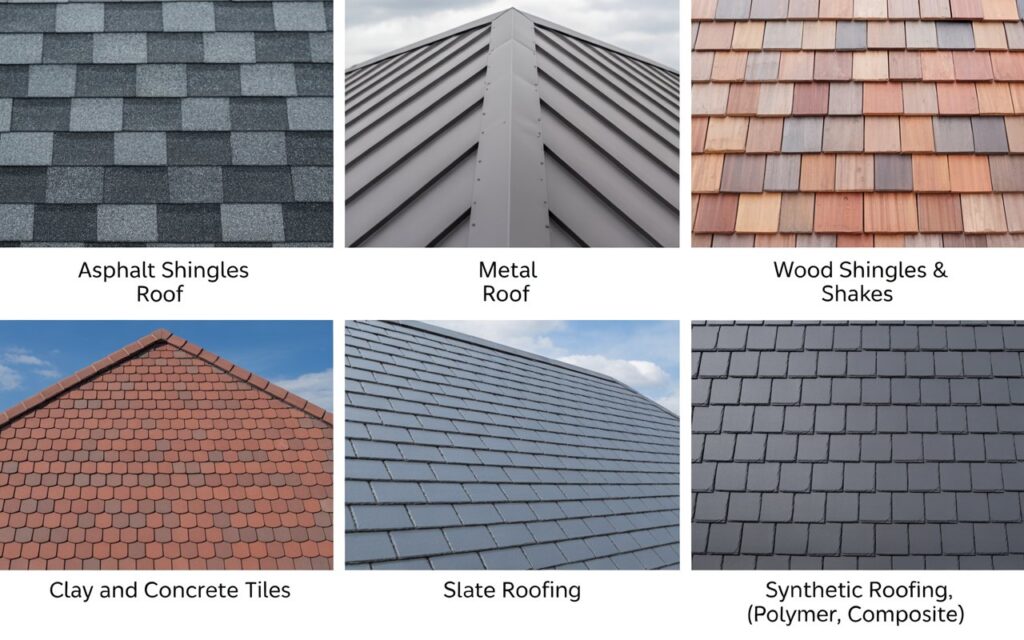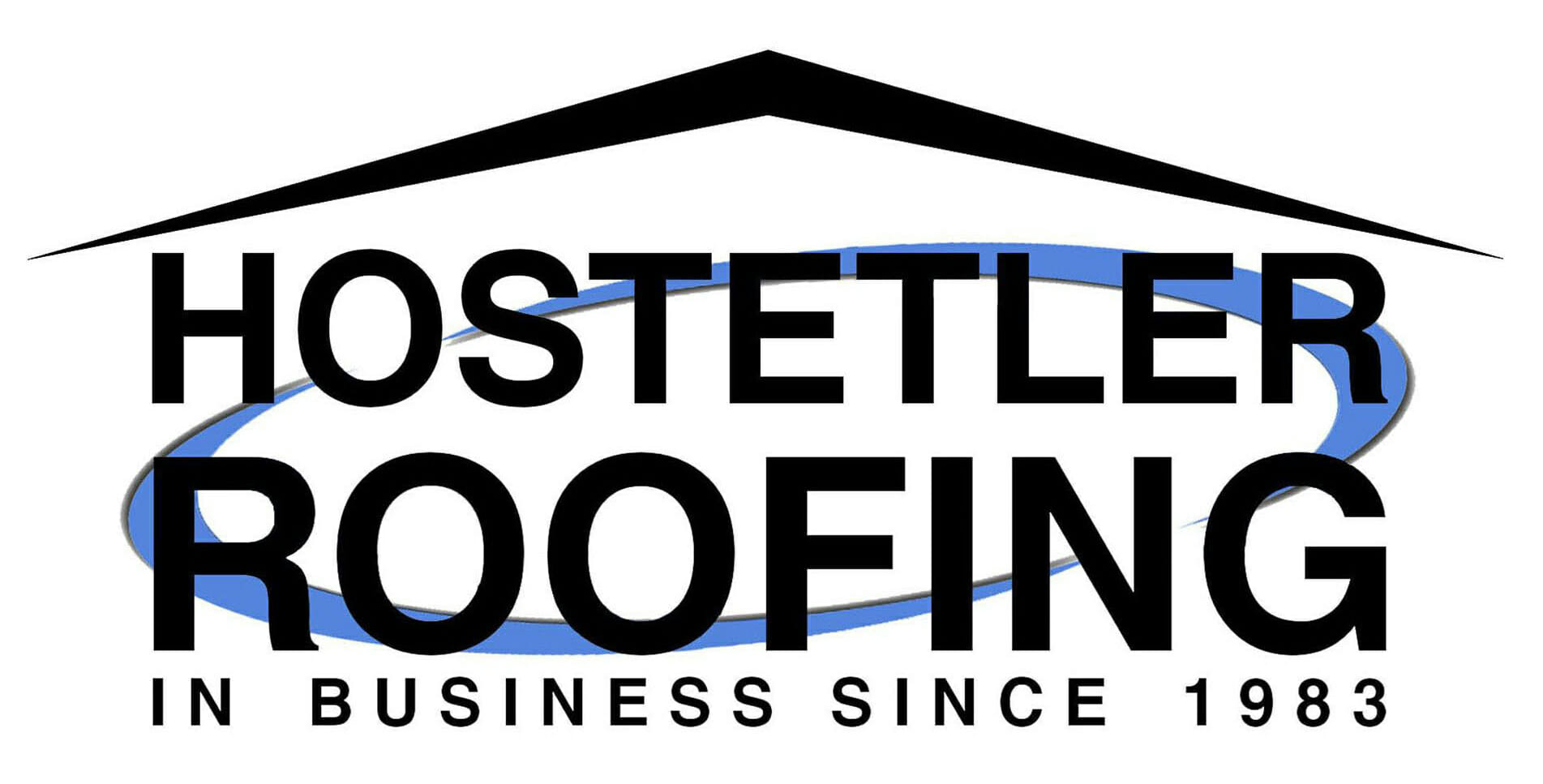
Installing a new roof is a big investment—and choosing the right roofing material can make all the difference in durability, energy efficiency, and long-term home value. With so many options available, it’s important to weigh your choices based on your home’s style, your local climate, and your budget.
At Hostetler Roofing, we help homeowners across Nashville, Arkansas, and the ArkLaTex region make informed roofing decisions. Below is a breakdown of the most popular and reliable roofing materials on the market today.
1. Asphalt Shingles
Overview:
Asphalt shingles are the most commonly used roofing material in the United States—and for good reason. They’re affordable, easy to install, and available in a wide range of styles and colors.
Pros:
- Budget-friendly
- Easy to replace and repair
- Works well in most climates
- Available in 3-tab or architectural (dimensional) varieties
Cons:
- Shorter lifespan (15–30 years)
- Can be vulnerable to wind uplift and storm damage
Best For: Homeowners looking for a cost-effective, versatile option that fits almost any home style.
2. Metal Roofing
Overview:
Metal roofs are gaining popularity for their longevity and resistance to extreme weather. Common types include standing seam panels and metal shingles.
Pros:
- Lifespan of 40–70 years
- Excellent resistance to fire, wind, and impact
- Reflective surface improves energy efficiency
- Low maintenance
Cons:
- Higher initial cost than asphalt
- Can be noisy during heavy rain or hail without proper insulation
Best For: Homeowners looking for long-term durability and energy savings, especially in storm-prone or hot climates.
Energy.gov outlines how metal roofs contribute to energy-efficient home design.
3. Wood Shingles & Shakes
Overview:
Wood shingles and shakes offer a classic, natural appearance. Shingles are machine-cut for a smooth finish, while shakes are hand-split for a more rustic look.
Pros:
- Distinctive, organic curb appeal
- Natural insulation properties
- Biodegradable and eco-friendly
Cons:
- Requires regular maintenance (especially in humid climates)
- Fire risk without treatment
- Susceptible to mold, rot, and insects
Best For: Homes with a rustic, cottage, or traditional design—where aesthetics are a top priority.
4. Clay and Concrete Tiles
Overview:
Both clay and concrete tiles are known for their durability and distinctive appearance, often seen in Spanish, Mediterranean, or Southwestern-style homes.
Pros:
- Extremely long-lasting (50–100 years)
- Fire-resistant and durable
- Great insulation in hot, sunny climates
Cons:
- Very heavy—requires reinforced roofing structure
- Expensive to install and repair
- Not ideal for areas with frequent freeze-thaw cycles
Best For: Homes in warmer, dry climates or homeowners looking for a bold architectural statement.
Tile Roofing Industry Alliance offers guidance on the performance and options of tile roofing.
5. Slate Roofing
Overview:
Slate is a premium roofing material made from natural stone. It’s highly durable and considered one of the longest-lasting roofing options available.
Pros:
- Can last over 100 years
- Natural, elegant appearance
- Highly resistant to fire, water, and pests
Cons:
- Very heavy and requires reinforced support
- One of the most expensive roofing materials
- Specialized installation required
Best For: Historic homes or luxury properties where longevity and visual impact are priorities.
6. Synthetic Roofing (Rubber, Polymer, Composite)
Overview:
Synthetic roofing materials mimic the look of wood, slate, or tile but are made from engineered composites or rubber-like polymers.
Pros:
- Lightweight and durable
- Impact-resistant and UV-stable
- Often made from recycled materials
- Easier to install than natural alternatives
Cons:
- Varies in cost and quality by manufacturer
- May not have the same prestige as natural materials
Best For: Homeowners seeking eco-conscious alternatives or custom aesthetics with lower maintenance needs.
How to Choose the Best Roofing Material for Your Region
When selecting a roofing material, it’s critical to consider the local climate. In Nashville, AR, and throughout the ArkLaTex region, we experience:
- Hot, humid summers
- Frequent thunderstorms and high winds
- Occasional hail and ice in winter
Given this, materials like metal, asphalt architectural shingles, or synthetic composites tend to perform well because they handle moisture, heat, and impact effectively. Also consider:
- Lifespan vs. initial cost
- Energy efficiency and insulation
- Resale value and curb appeal
- Warranty coverage for both material and workmanship
For regional performance and product data, visit Roofing Contractor Magazine or NRCA.
Need Expert Help Choosing the Right Roof? Call Hostetler Roofing
At Hostetler Roofing, we’ve helped hundreds of homeowners choose the best roofing material for their budget, aesthetic, and long-term goals. Whether you’re building a new home or replacing an existing roof, we’ll guide you through the options and make sure your roof is built to last.
We proudly serve Nashville, Arkansas, and the entire ArkLaTex region with professional roofing services backed by decades of experience.
Contact us today for a free consultation or estimate—and let’s find the perfect roof for your home. Call us at (870) 5575686 or schedule a free estimate online.
You May Also Like To Read: Roof Tear-Off vs. Overlay: Which is Better for Your Home?

